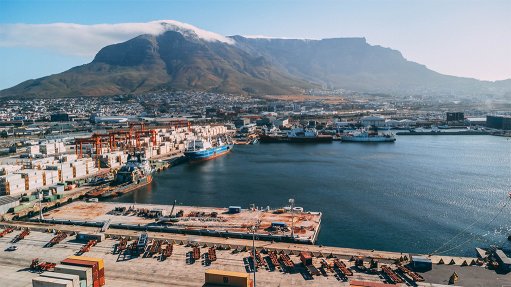Digital technologies at the forefront of better water management
This article has been supplied as a media statement and is not written by Creamer Media. It may be available only for a limited time on this website.
South African sustainable water solutions company Talbot has partnered with a leading European specialist in energy optimisation to help water intensive industries optimise their processes by adopting data-centric technologies and taking on board the lessons learned during the global energy crunch.
Rising population growth, urbanisation, pollution and the growing effects of climate change are putting massive strain on water availability, which means that water will become a strategic factor for companies across most sectors.
Scarcity translates into mounting costs, a more demanding regulatory environment and competition among companies and communities for access. Moreover, investment choices are increasingly being informed by climate, environmental, social and governance risks.
“The good news is that scalable and effective technologies are already available to help forward-thinking organisations do more with less by optimising their water use,” says Talbot smart water engineer Sashnee Naicker.
Naicker is a mechanical engineer and data scientist with experience in the application of artificial intelligence (AI), internet of things (IOT) and machine learning (ML) in the factories of the future.
“When energy security and peak charges became a threat, big users started to critically examine how much electricity they were using, where they were using it, wasting it and how they could become more efficient. Today, we urgently need to apply those exact same principles in the water space,” she says.
Talbot is collaborating with Aliene van der Veen, an AI and ML developer within the European energy optimisation sector, to help companies take control of their water risks by embracing the lessons learned and the kinds of technologies adopted in the transition towards greener, more optimised solutions.
“For a long time, active energy optimisation in Europe was an activity that only the largest industrial sites engaged in, mainly at the request of the grid operator. Over the last decade, advancements in data-driven energy management systems have unlocked flexibility across processes at large and smaller sites,” says van der Veen.
Factories of the future
Digital innovation in the water space is picking up significant momentum, with big data, data science, IoT, analytics and AI being the most prevalent technologies in use.
“With our mutual expertise in creating digitalised and connected environments through data science, analysis and modelling, we can help production facilities find opportunities for optimisation and improvement that will save them both water and money.
“This extends beyond water consumption and conservation and may relate to chemical and consumable usage, equipment health, predictive maintenance and overall process optimisation,” says Naicker.
For example, Talbot is currently working at a large food manufacturing facility where it is installing a full IoT optimisation set-up that will extract consumption data from key areas of the plant. This data will be modelled and analysed to create a demand and optimisation profile so that potential improvements across the production value chain and water cycle can be identified.
“The goal is to pinpoint wastage, losses and recycling opportunities, consumption flexibility, optimisation potential and, ultimately, improved risk mitigation and control.”
Ahead of the water crisis curve
Talbot water strategist Helen Hulett believes that South African process and manufacturing organisations operating within the confines of a severely-constrained energy and water environment, could lead the way for industries around the world.
“When it comes to energy and water scarcity, we are definitely ahead of the curve. In the case of water, supply disruptions already occur. Here, the optimisation of water resources can no longer be regarded as an opportunity, but rather an absolute necessity for the majority of industries to survive,” she says.
The country has suffered from prolonged periods of drought and the situation has been made worse by deteriorating infrastructure. This has not only resulted in water restrictions, especially in dry seasons, but significantly impacted upon water quality with accompanying health concerns.
These shortcomings came to the fore in 2019, with widely reported water shortages and disruptions in supply. In certain areas, this has resulted in incidents of community unrest, something that is expected to escalate, resulting in increased political pressure and decreased social stability.
Furthermore, the current global annual inflation rate for water is just under 4%, however in South Africa, it was around 10% in 2019, and is expected to accelerate still further.
“We need, out of necessity, to turn the country into a successful example of water innovation in action. This means, the conservation, demand management, and optimisation of a scarce resource using locally developed technologies and techniques that lend themselves to a global marketing strategy,” says Hulett.
This, she believes, can be achieved through collaboration and partnership among stakeholders who share a common vision – thriving in a world where water has become a resource of immense value and importance.
Comments
Press Office
Announcements
What's On
Subscribe to improve your user experience...
Option 1 (equivalent of R125 a month):
Receive a weekly copy of Creamer Media's Engineering News & Mining Weekly magazine
(print copy for those in South Africa and e-magazine for those outside of South Africa)
Receive daily email newsletters
Access to full search results
Access archive of magazine back copies
Access to Projects in Progress
Access to ONE Research Report of your choice in PDF format
Option 2 (equivalent of R375 a month):
All benefits from Option 1
PLUS
Access to Creamer Media's Research Channel Africa for ALL Research Reports, in PDF format, on various industrial and mining sectors
including Electricity; Water; Energy Transition; Hydrogen; Roads, Rail and Ports; Coal; Gold; Platinum; Battery Metals; etc.
Already a subscriber?
Forgotten your password?
Receive weekly copy of Creamer Media's Engineering News & Mining Weekly magazine (print copy for those in South Africa and e-magazine for those outside of South Africa)
➕
Recieve daily email newsletters
➕
Access to full search results
➕
Access archive of magazine back copies
➕
Access to Projects in Progress
➕
Access to ONE Research Report of your choice in PDF format
RESEARCH CHANNEL AFRICA
R4500 (equivalent of R375 a month)
SUBSCRIBEAll benefits from Option 1
➕
Access to Creamer Media's Research Channel Africa for ALL Research Reports on various industrial and mining sectors, in PDF format, including on:
Electricity
➕
Water
➕
Energy Transition
➕
Hydrogen
➕
Roads, Rail and Ports
➕
Coal
➕
Gold
➕
Platinum
➕
Battery Metals
➕
etc.
Receive all benefits from Option 1 or Option 2 delivered to numerous people at your company
➕
Multiple User names and Passwords for simultaneous log-ins
➕
Intranet integration access to all in your organisation





















